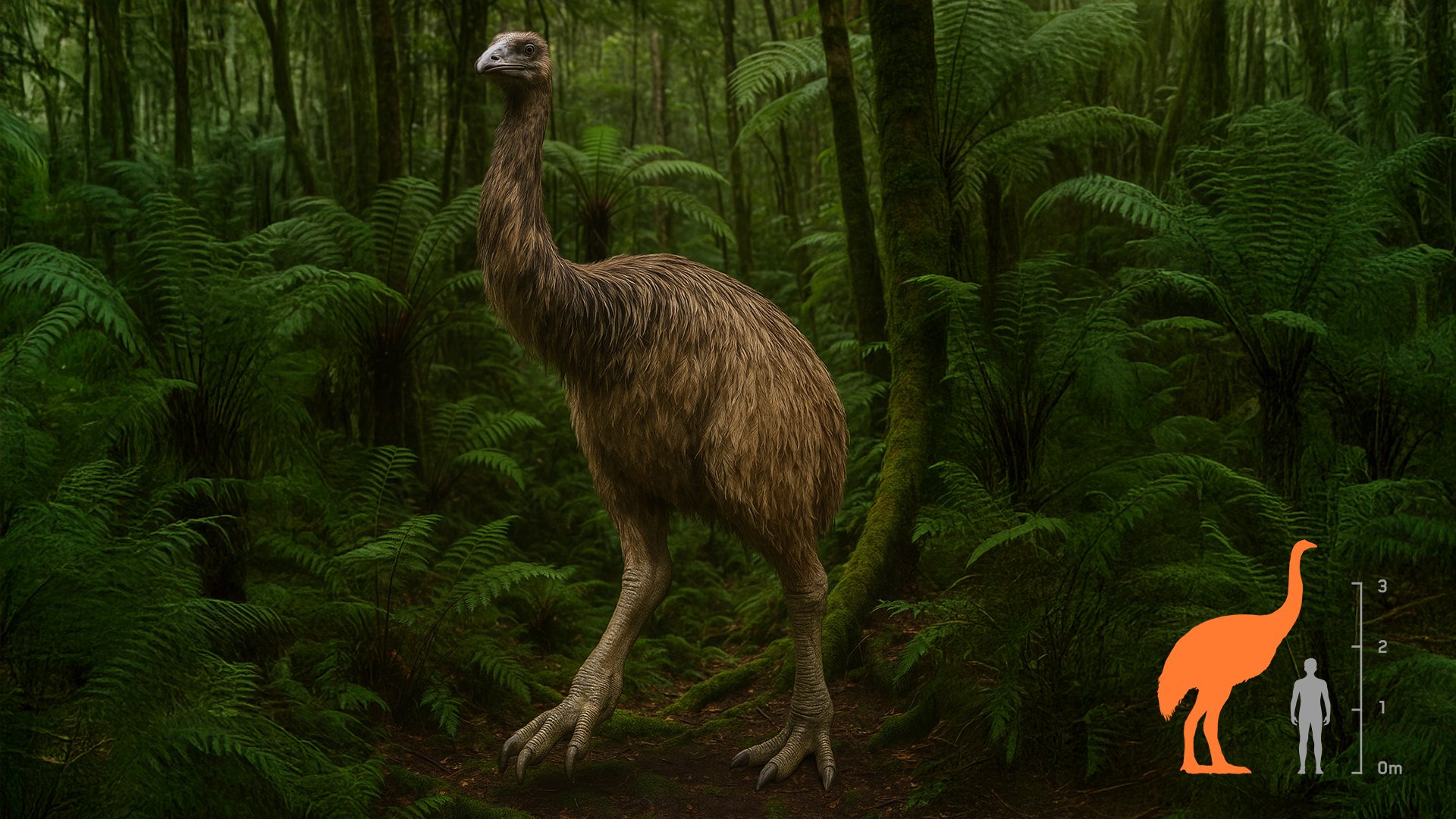
Imagine the camera rising to an extreme long shot, revealing a dramatic landscape dotted with large flightless birds.
Genetic engineering firm Colossal Biosciences is offering a hint that one day this image will become less film fiction and more scientific fact.
It recently announced plans to resurrect the extinct South Island giant moa in collaboration with the Ngāi Tahu Research Centre, film-maker Sir Peter Jackson, scientist Paul Scofield and the University of Canterbury.
Standing up to 3.6m tall and weighing 230kg, the giant moa disappeared from Te Waipounamu about 600 years ago, hunted to extinction two centuries after Polynesian settlement.
Colossal will work closely with the Ngāi Tahu Research Centre to integrate mātauranga Māori, traditional knowledge, in its approach, providing for indigenous leadership in scientific innovation.
Ngāi Tahu Research Centre director Prof Mike Stevens said during the 14th and 15th centuries, moa provided meat for sustenance and bones and feathers for tools and decoration, especially in Te Waipounamu.
"The loss of moa, through over-harvesting and habitat modification, was a salutary lesson as to the New Zealand archipelago’s ‘fragile plenty’."
Ngāi Tahu was particularly excited by this project because of the extent to which it enabled Ngāi Tahu to exercise rangatiratanga (leadership) and tikanga (customs) and the potential to bring ecological and economic aspirations into a singular frame.
Colossal chief science officer Beth Shapiro said birds were among the most endangered species in New Zealand and around the globe, but had the fewest biotechnological tools available to protect them.
"Because of their unique reproductive system, for example, it is not possible to ‘clone’ birds in the way that Dolly the sheep was cloned, so a new approach is needed to pass edits in DNA to the next generations."
As Colossal developed tools for intra-species surrogacy, captive management and re-wilding, each of these technologies would be extendable to other species.
"We will create genomic resources for living species that improve our capacity to manage them and participate in ecosystem restoration projects that will benefit living species."
Colossal gained worldwide media attention recently when it revealed what it described as the return of the dire wolf, an American predator that had been extinct for more than 10,000 years.
Using ancient samples of dire wolf DNA and genetic engineering as well as domestic hounds as surrogate mothers, three dire wolves were birthed.
To resurrect the giant moa, Colossal was evaluating two of the closest living relatives of moa as surrogate hosts, the tinamou and the emu, Dr Shapiro said.
"This is a long-term project and partnership and we are hopeful that the first chicks will be born within a decade."
Whether de-extinction is legally possible within the country’s existing biotechnology and environmental laws is something that will require further investigation.
As a new concept, as far as she was aware, no country had laws explicitly focused on de-extinct species, Dr Shapiro said.
"Our goal is to work with our partners in Aotearoa New Zealand to explore the regulatory frameworks that would apply to our and other conservation work and to develop pathways for these tools to be used to introduce de-extinct species and augment existing conservation work."















